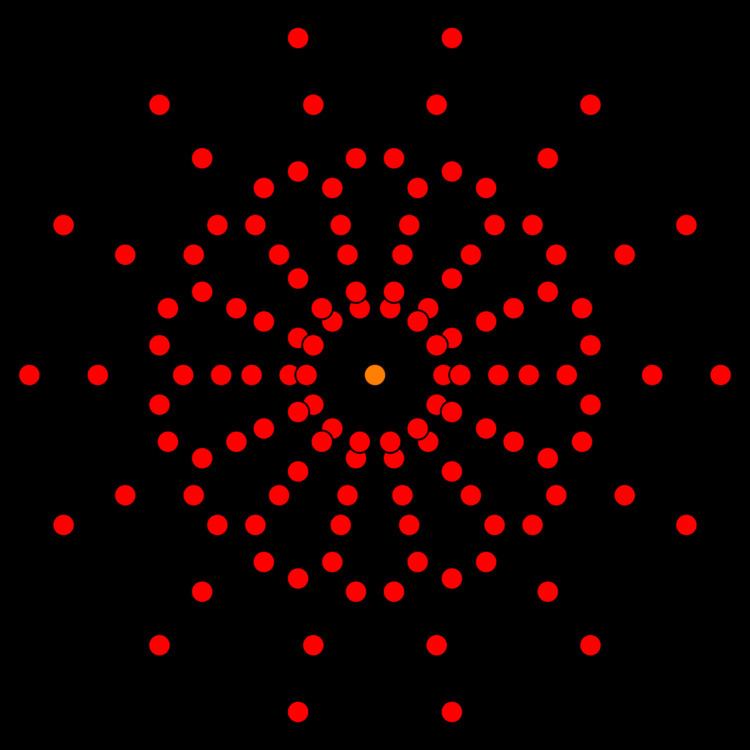 | ||
In geometry, a 7-cube is a seven-dimensional hypercube with 128 vertices, 448 edges, 672 square faces, 560 cubic cells, 280 tesseract 4-faces, 84 penteract 5-faces, and 14 hexeract 6-faces.
Contents
It can be named by its Schläfli symbol {4,35}, being composed of 3 6-cubes around each 5-face. It can be called a hepteract, a portmanteau of tesseract (the 4-cube) and hepta for seven (dimensions) in Greek. It can also be called a regular tetradeca-7-tope or tetradecaexon, being a 7 dimensional polytope constructed from 14 regular facets.
Related polytopes
It is a part of an infinite family of polytopes, called hypercubes. The dual of a 7-cube is called a 7-orthoplex, and is a part of the infinite family of cross-polytopes.
Applying an alternation operation, deleting alternating vertices of the hepteract, creates another uniform polytope, called a demihepteract, (part of an infinite family called demihypercubes), which has 14 demihexeractic and 64 6-simplex 6-faces.
Cartesian coordinates
Cartesian coordinates for the vertices of a hepteract centered at the origin and edge length 2 are
(±1,±1,±1,±1,±1,±1,±1)while the interior of the same consists of all points (x0, x1, x2, x3, x4, x5, x6) with -1 < xi < 1.
Projections
Hepteract 7D simple rotation through 2Pi with 7D perspective projection to 3D.
